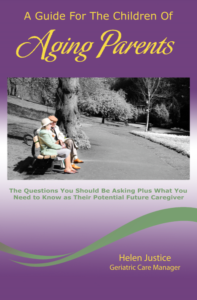Most of those receiving long-term care and most caregivers prefer a home environment.
Out of an estimated 10 million older Americans receiving care, about 7 million are in their own home or the home of a family

member or friend. The National Association for Home Care & Hospice reports that over 12 million individuals currently receive care from more than 33,000 providers (for causes including acute illness, long-term health conditions, permanent disability, or terminal illness).
Most older people prefer their home over the unfamiliar proposition of living in a care facility.
Family or friends attempt to accommodate the wishes of loved ones even though caregiving demands might warrant a different environment. Those needing care feel comfortable and secure in familiar surroundings and a home is usually the best setting for that support.
Often the decision to stay in the home is dictated by funds available.
It is much cheaper for a wife to care for her husband at home than to pay out $3,000 to $6,000 a month for care in a facility. Likewise, it’s much less costly and more loving for a daughter to have her widowed mother move into the daughter’s home than to liquidate mom’s assets and put her in a nursing home. Besides, personally taking care of our parents or spouses is an obligation most of us feel very strongly about.
For many long term care recipients the home is an ideal environment.
These people may be confined to the home but continue to lead active lives engaging in church service, entertaining grandchildren, writing histories, corresponding, pursuing hobbies or doing handwork activities. Their care needs might not be that demanding and might include occasional help with house cleaning and shopping as well as help with getting out of bed, dressing and bathing.
Most of the time these people don’t need the supervision of a 24/7 caregiver.
There are, however, some care situations that make it difficult to provide long term care in the home.
It is precisely the ongoing and escalating need for help with activities
of daily living or the need for extended supervision that often makes it impossible for a caregiver to provide help in the home. Either the physical demands for help with activities of daily living or the time demand for supervision can overwhelm an informal caregiver. This untenable situation usually leads to finding another care setting for the loved one.
On the other hand if there are funds to hire paid providers to come into the home,
there would be no need for finding another care setting. By planning for eldercare in advance and providing the funding necessary to remain in the home, no one need go to a facility to receive long term care. With enough money, anyone who desires, can remain at home to receive the necessary care.
Copyright 2017 – Helen Justice GCM – Elder Care Navigator and Advocate – Advanced Wellness GCM, Inc
Known by many as “The Elder Care Navigator”, Helen Justice is a Certified Geriatric Care Manager trained to assist elders and their families with the process of aging with dignity and grace. Her knowledge and experience insures elders obtain quality care and transitional preparation for their future. More important than the financial aspect of aging is the social and emotional component that elder care places on the family. Go to www.advancedwellnessgcm.com for information on no fee seminar.
 member or friend. The National Association for Home Care & Hospice reports that over 12 million individuals currently receive care from more than 33,000 providers (for causes including acute illness, long-term health conditions, permanent disability, or terminal illness).
member or friend. The National Association for Home Care & Hospice reports that over 12 million individuals currently receive care from more than 33,000 providers (for causes including acute illness, long-term health conditions, permanent disability, or terminal illness).


Stay Up To Date With AWGCM